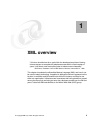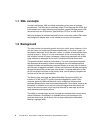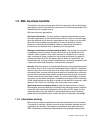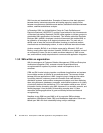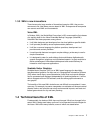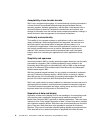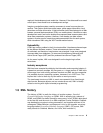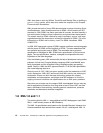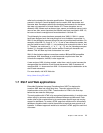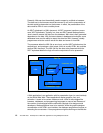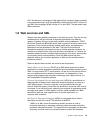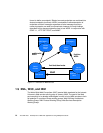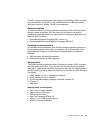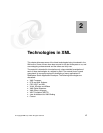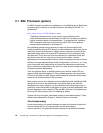Chapter 1. XML overview 11
relied on the standard for character specifications. Characters that are not
present in Version 2.0 would probably have be used in XML documents and
character data. Developers would have developed workarounds for characters
that were not supported in Unicode Version 2.0. These characters are not
allowed in XML names such as element type, names, and attribute names, just to
name a few. Also, some characters that should have been permitted in XML 1.0,
but were not due to oversights and inconsistencies in Unicode 2.0.
The philosophy for names has been reversed since XML1.0. XML1.1 names
have been designed such that everything that is not forbidden is permitted. In
XML1.0 the philosophy was everything that was not permitted was forbidden. For
example, under XML1.0, if only ‘a’, ‘b’, ‘c’, ‘d’ and ‘e’ were allowed as names, that
was that could be used. In XML 1.1, we could say that we would not allow ‘a’ and
‘b’. Therefore, we could use ‘b’, ‘c’, ‘e’, ‘f’, ...’g’, ...’$’, etc. As Unicode grows past
Version 3.1, changes to the XML can be avoided if nearly all characters are
allowed. This will allow any kind of characters in a name.
XML1.0 discriminates against conventions used on IBM and IBM-compatible
mainframes. XML documents on mainframes and not plain texts. Now, the
Unicode line separator, #x2028, is also supported.
A new version of XML is being created, rather than a set of errata, because the
changes affect the definition of well-formed documents. XML Processors will
recognize XML 1.1 documents from XML 1.0 documents by the declaration at the
start of each document.
For more details, visit W3C Web site:
http://www.w3.org/TR/xml11/
1.7 XSLT and Web applications
Extensible Stylesheet Language Transformations (XSLT) is designed to
transform XML data into some other form. The most common form the
transformation occurs to is HTML. Transformation to HTML is the final step
before the user sees the Web page.
The main problem with HTML is its unorganized implementation. It evolution was
driven mainly by extreme competition between Netscape and Microsoft. Each
vendor tried to gain market share by its own browser specific tags and varying
support for standards. To create a HTML page that would work on all browsers,
developers therefore had to restrict themselves to tags that were generic to all
browsers. A different approach would be to maintain a HTML page for each kind
of browser.



